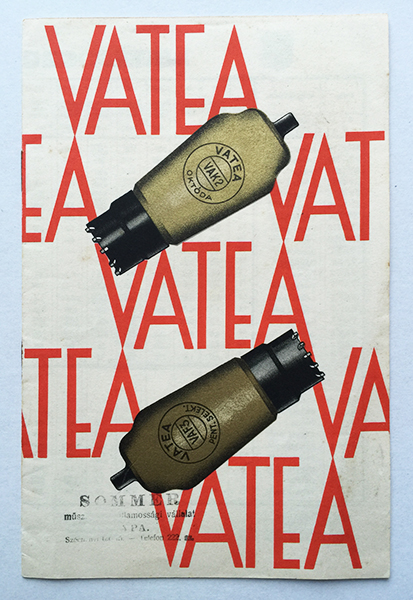
Description:
Brochure for Vatea vacuum tubes from the mid 1930s. Size: 14.5 x 22.5 cm.
In electronics, a vacuum tube, an electron tube is a device that controls electric current between electrodes in anevacuated container. Vacuum tubes mostly rely on thermionic emission of electrons from a hotfilament or a cathode heated by the filament. This type is called a thermionic tube orthermionic valve. A phototube, however, achieves electron emission through the photoelectric effect. Not all electronic circuit valves/electron tubes are vacuum tubes (evacuated); gas-filled tubes are similar devices containing a gas, typically at low pressure, which exploit phenomena related to electric discharge in gases, usually without a heater. Invented in 1904 by John Ambrose Fleming, vacuum tubes were a basic component for electronics throughout the first half of the twentieth century, which saw the diffusion of radio, television, radar, sound reinforcement, sound recording and reproduction, large telephone networks, analog and digital computers, and industrial process control. (source: wikipedia.org).
The cover has a beautiful modernist design with the brand name (written in a spectacular modernist typography) arranged in a geometric order and two pieces of the tubes in radiant gold colour. The brochure has four pages with the description of the products offered by Vatea and a small manual on the last page. The back cover has the same pattern as the front except the tubes, and the colour of the text is lighter.











